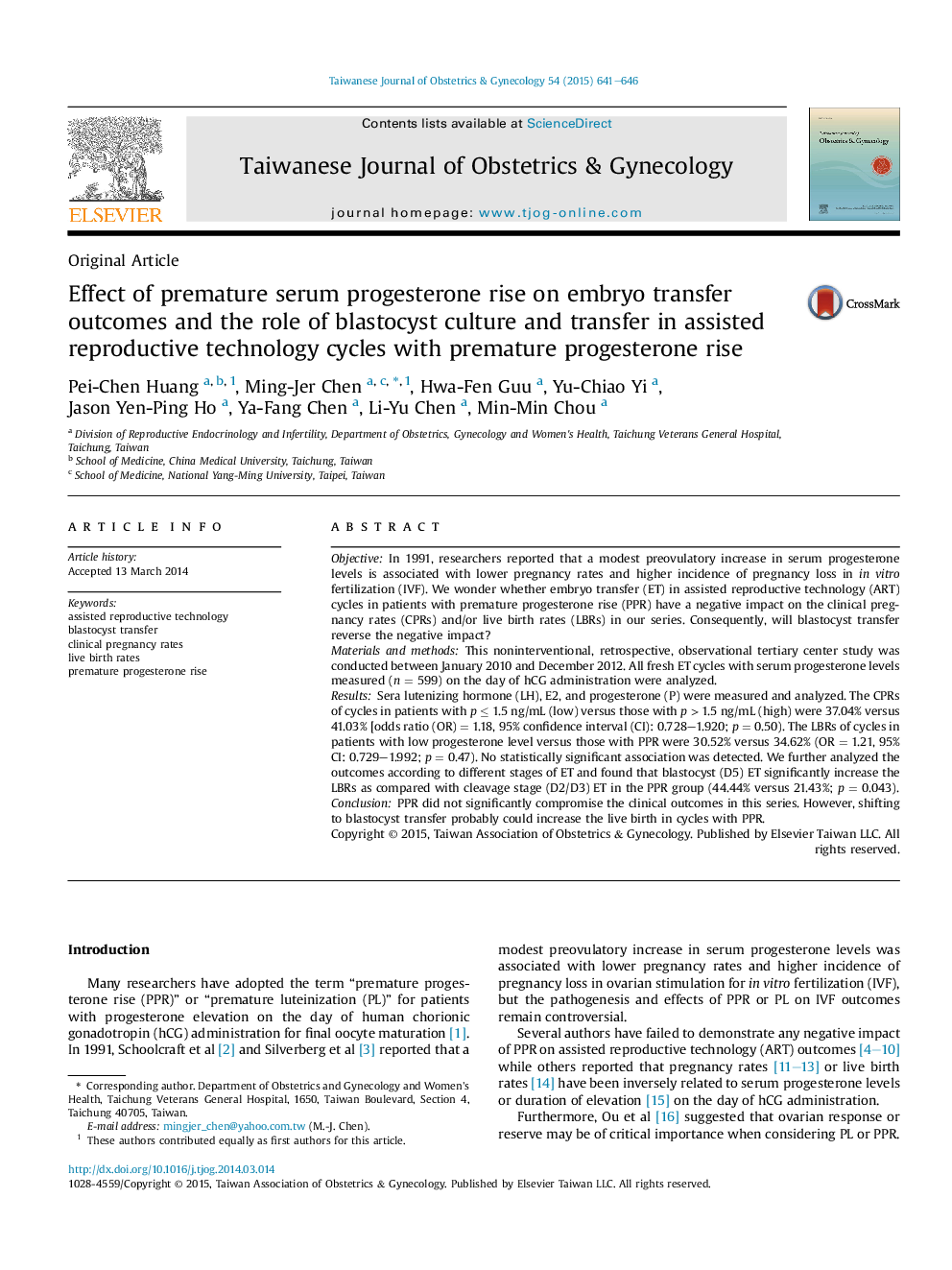| کد مقاله | کد نشریه | سال انتشار | مقاله انگلیسی | نسخه تمام متن |
|---|---|---|---|---|
| 3975230 | 1600969 | 2015 | 6 صفحه PDF | دانلود رایگان |
ObjectiveIn 1991, researchers reported that a modest preovulatory increase in serum progesterone levels is associated with lower pregnancy rates and higher incidence of pregnancy loss in in vitro fertilization (IVF). We wonder whether embryo transfer (ET) in assisted reproductive technology (ART) cycles in patients with premature progesterone rise (PPR) have a negative impact on the clinical pregnancy rates (CPRs) and/or live birth rates (LBRs) in our series. Consequently, will blastocyst transfer reverse the negative impact?Materials and methodsThis noninterventional, retrospective, observational tertiary center study was conducted between January 2010 and December 2012. All fresh ET cycles with serum progesterone levels measured (n = 599) on the day of hCG administration were analyzed.ResultsSera lutenizing hormone (LH), E2, and progesterone (P) were measured and analyzed. The CPRs of cycles in patients with p ≤ 1.5 ng/mL (low) versus those with p > 1.5 ng/mL (high) were 37.04% versus 41.03% [odds ratio (OR) = 1.18, 95% confidence interval (CI): 0.728–1.920; p = 0.50). The LBRs of cycles in patients with low progesterone level versus those with PPR were 30.52% versus 34.62% (OR = 1.21, 95% CI: 0.729–1.992; p = 0.47). No statistically significant association was detected. We further analyzed the outcomes according to different stages of ET and found that blastocyst (D5) ET significantly increase the LBRs as compared with cleavage stage (D2/D3) ET in the PPR group (44.44% versus 21.43%; p = 0.043).ConclusionPPR did not significantly compromise the clinical outcomes in this series. However, shifting to blastocyst transfer probably could increase the live birth in cycles with PPR.
Journal: Taiwanese Journal of Obstetrics and Gynecology - Volume 54, Issue 6, December 2015, Pages 641–646
